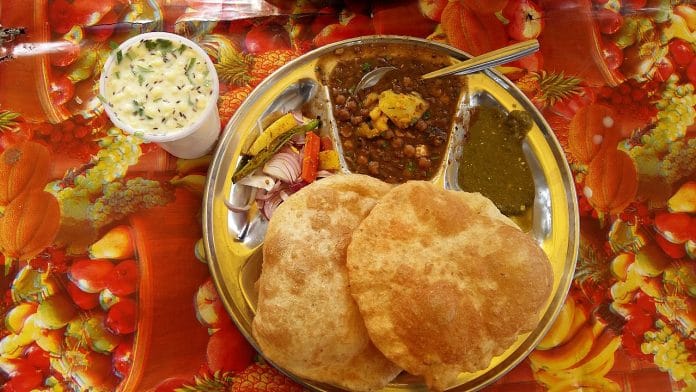Burgers, pizzas, pastas, and tacos are out. They’ve been dethroned by homegrown traditional Indian comfort food—chole bhature, samosas, chaat, pani puri, and of course, momos. After all, who needs a bland burger when you can have a plate of crispy, spicy samosas?
The latest India Food Services Report released by the National Restaurant Association of India (NRAI) on 9 July 2024 shows that Indian snacks dominate Delhi’s tastebuds, accounting for 51 per cent of dining preferences. This is followed by Mughlai and North Indian cuisine, Italian (pasta, pizza), Chinese, and South Indian. American fast food like burgers and hotdogs occupy the last spot. Noida’s palate is similar as well.
“People are embracing their local food with pride. After all, it is one of the pillars of the ‘Bharat’ that the central government is showcasing on the global front,” said Varun Khera, Noida Chapter Head, NRAI.
The secret sauce is the sheer nostalgia and burst of flavours that global cuisines just can’t match. For years, we’ve been swept up in the Western food craze, thinking it was the epitome of cool. Now, we’re flipping the script. Desi is cool again.
Jazz it up
Chefs also deserve due credit for reviving this love for Indian food. To keep menus from becoming stale, chefs have become more adventurous.
Take Chica Loca in Noida, for instance. They’ve turned the humble papdi chaat into a theatrical performance. The chef arrives with the ingredients presented separately. On a white board, he artistically drizzles sauces, including anardana (pomegranate) chutney, then adds mashed avocado, mango murabba, and microgreens. Finally, he places six pieces of crispy papdi on top of the concoction. The makeover is not superficial; it hits all the right notes of sweet, sour, and spicy. Chaat in a gold dress and red heels.
Then there’s Samosa King in Delhi’s West Patel Nagar, which has an impressive 19 varieties of samosas, including a cheesy and spicy mix. And let’s not forget The Chatter House in Delhi, where they’ve elevated the classic naan by stuffing it with blue cheese and serving it in shot glasses brimming with dal makhani. A heavy meal has been effortlessly transformed into pub food. It’s a brilliant twist to a desi favourite, making it both Instagrammable and irresistible.
After all, whatever is seen is sold.
Indian food is comfort food
Friends and trends may come and go, but Delhi-NCR’s love for chaat and chole bhature is forever. While Mumbai’s vada pav is nipping at their heels, come winter, everyone turns to chole bhature. It can’t be dethroned that easily.
In India, McDonald’s was the first fast-food restaurant to open its doors in 1996. It quickly gained popularity, particularly among younger Indians who were curious about American culture. As McDonald’s expanded across the country, other fast-food chains followed suit. Burger King opened its first restaurant in India in 2014, and Wendy’s followed in 2015.
As a child, it’s all I wanted to eat— chicken burger with loads of cheese. Today, it’s the last thing I want to eat.
The health angle
Turns out, our traditional fare isn’t just delicious—it’s a health-conscious choice in disguise.
Remember when the West turned up its nose at desi ghee, branding it a cholesterol nightmare? Well, today, it’s the darling of many celebrities. Case in point–model and entrepreneur Kourtney Kardashian swears by her morning ritual of drinking desi ghee to stay fit and healthy. Coconut is the new superfood.
Perhaps I’m wrong, but in my head, a plate of chole bhature trumps a burger any day. Fresh chickpeas tossed in spices versus a frozen patty and a bun loaded with yeast and sugar? No contest. Plus, frying that frozen meat patty adds a hefty dose of fat, making your arteries weep.
According to a study by The Picky Eater, Indian eateries are the third-most common restaurants in the most-visited cities around the world (8 per cent), after Chinese (9.5 per cent) and Italian (8.5 per cent).
Welcome back, desi snacks.
(Edited by Humra Laeeq)







Chole bature will take the consumers to the club of cardio-vascular diseases.